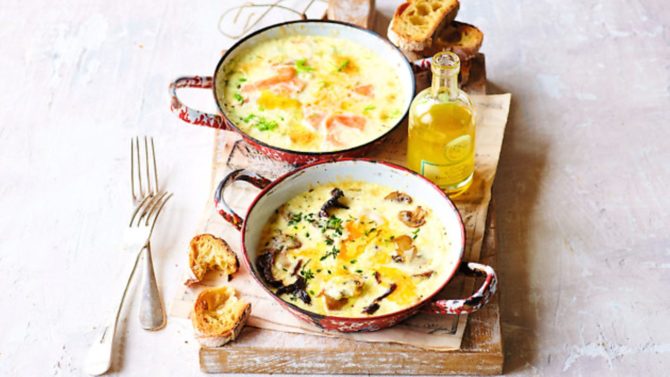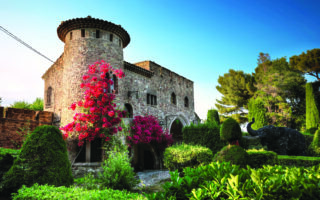Recipe: Oeufs en cocotte à la crème

Try the rich and creamy oeufs en cocotte à la crème at home and discover some variations on the dish you can expect in different areas of France
Written by Louise Pickford
The egg has a very special place in French gastronomy, both as a staple food and as a much-loved ingredient in the kitchen. Perhaps one of the most underrated, and yet so very French, egg dishes is oeufs en cocotte, which translates literally as ‘egg casserole’.
But what exactly are oeufs en cocotte? Are they baked eggs, poached eggs, or as the Brits might say, coddled eggs? According to Elizabeth David, they are a cross between oeufs sur le plat, where an egg is cooked in a covered enamel or earthenware dish with a little butter, and a poached egg, where the eggs are cooked in a ceramic cocotte or ramekin dish. Both can be cooked on top of the stove or in an oven. Originally, I imagine this would depend on whether you actually had an oven, as many people would have cooked over an open fire, or taken their dishes to be cooked in a communal oven.
In their simplest oeufs en cocotte form, the eggs are carefully broken into the cocotte with a little butter, salt and pepper. These are then cooked in a water bath until the white is set and the yolk cooked but still soft.
When cream is added, they become oeufs en cocotte à la crème, and can be enhanced with a whole range of flavourings from just a simple herb, to spinach lightly sautéed in butter, smoked salmon or shredded ham, to wild mushrooms and truffles or even foie gras. Some people like to add a topping of grated cheese, while others prefer none. Of course, both the seasons and the region will determine what is added to a dish. For example, in Provence it is common to find oil used rather than butter, as well as tomatoes; whereas in Normandy, you are likely to be offered a simpler affair with butter and cream. In spring, perhaps some fresh herbs or baby spinach leaves will be added, while in autumn some sautéed wild mushrooms or thinly slice foie gras. Testament, if ever it were needed, to the versatility of this classic French dish fit for a decadent light lunch or a fine starter for that special occasion.
RECIPE
Serves 2
INGREDIENTS
• 150g small mushrooms
• 25g butter
• 1 tsp chopped fresh thyme leaves
• 2 free-range eggs
• 250ml double cream
• 15g freshly grated Parmesan cheese
• salt and pepper
• baguette, toasted to serve
• a drizzle of truffle oil (optional)
METHOD
1. Preheat the oven to 180°C/160°C fan. Wipe the mushrooms with a damp cloth to remove any dirt and slice or quarter them.
2. Melt the butter in a frying pan, and as soon as it stops foaming add the mushrooms, thyme and a little salt and pepper. Fry the mushrooms over a high heat for 5 minutes until golden, and their juices thickened and reduced.
3. Divide the mushrooms between two 200ml ramekins. Break an egg into each one and top with the cream, Parmesan and a little salt and pepper.
4. Place the ramekins in a deep ovenproof tray and add enough boiling water to come halfway up the sides of the dishes. Bake for 10 to 15 minutes until the top is lightly golden and the eggs are cooked to your liking. To achieve the perfect balance of set white and soft yolk, check the progress after 10 minutes, cooking a little longer as necessary. Cool for 5 minutes before serving with baguette and a drizzle of truffle oil, If desired.
Variations:
Salmon and dill; replace the mushrooms and thyme with 100g smoked salmon and a tablespoon chopped fresh dill.
Spinach; replace the mushrooms with 100g fresh spinach, wilted in a pan
More recipes for: fondant au chocolat; poulet Vallée d’Auge; crêpes Suzette
Share to: Facebook Twitter LinkedIn Email


